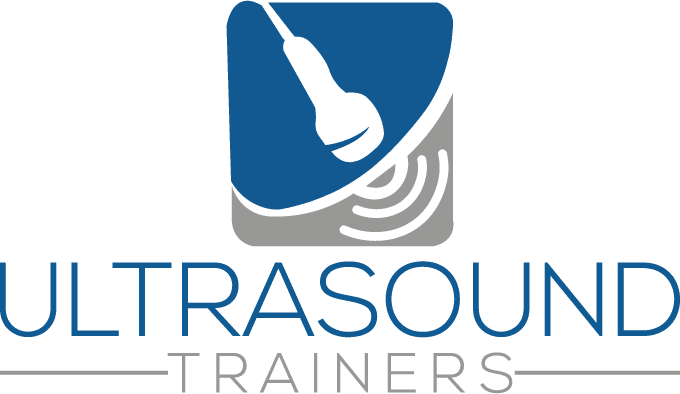4D Ultrasound Explained: Tech, Benefits & Future Innovations
Welcome! If you’ve ever wondered “What is 4D ultrasound?” or how those real‑time baby videos are created, you’re in the right place. In this deep‑dive guide, we’ll unpack the technology behind 4D ultrasound, compare it to 2D and 3D, explore top machines, weigh pros and cons, and even peek at what the future holds. Whether you’re an expectant parent, a sonographer, or an entrepreneur considering starting an elective ultrasound business, you’ll gain expert insights and practical takeaways—courtesy of Ultrasound Trainers.
What Is 4D Ultrasound? A Beginner’s Guide
At its core, a 4D ultrasound is simply a 3D ultrasound in motion. While 3D ultrasound captures three‑dimensional still images of the fetus, 4D adds the element of time—producing live video. This real‑time imaging allows you to see baby yawns, stretches, and even facial expressions as they happen.
Why it matters: Real‑time feedback can enhance bonding for parents and gives sonographers immediate insight into fetal behavior and health. It’s become a staple in keepsake baby ultrasound studios, offering an emotional experience that 2D can’t match.
Industry context: First introduced in the late 1990s, 4D ultrasound has rapidly evolved. Advances in processing power and transducer design now deliver smoother frame rates and higher resolution, making the technology accessible not only in hospitals but also in elective ultrasound businesses.
2D vs. 3D vs. 4D Ultrasound: Key Differences Explained
2D Ultrasound Basics
2D ultrasound uses a single plane of sound waves to produce flat, black‑and‑white images. It’s the clinical standard for assessing fetal anatomy, measuring growth, and detecting anomalies.
3D Ultrasound: Adding Depth
3D ultrasound collects multiple 2D slices and reconstructs them into a volumetric image. This gives a lifelike snapshot of the baby’s surface features—great for detecting facial clefts or other structural issues.
4D Ultrasound: Real‑Time Motion
4D simply streams those 3D volumes in real time. Think of it as a video rather than a photo. Frame rates typically range from 20 to 30 frames per second, depending on the machine and settings.
How 4D Ultrasound Technology Works: Behind the Scenes
4D ultrasound relies on high‑speed processing and advanced transducers. Here’s a simplified breakdown:
- Volume acquisition: The probe sweeps across the area, capturing multiple 2D slices in rapid succession.
- Reconstruction: A built‑in computer stitches slices into a 3D volume.
- Rendering & display: That volume is rendered as a continuous video stream—giving the “fourth dimension” of time.
Key components:
- Matrix array transducers: These have thousands of tiny elements that can be fired independently for rapid volume sweeps.
- GPU‑accelerated processing: Modern machines use graphics processors to reconstruct and render volumes in real time.
Top Latest 4D Ultrasound Machines on the Market
1. GE Voluson E10
— Renowned for exceptional image quality and high frame rates. Its HDlive™ rendering delivers lifelike skin tones and shadows.
2. Samsung Hera W10
— Offers advanced 4D Doppler and ergonomic design. The 8K internal imaging pipeline ensures crisp detail.
3. Philips EPIQ CVx
— Exceptional fetal cardiac imaging plus real‑time 3D/4D. Its nSIGHT™ architecture accelerates volume rates.
4. Mindray Resona R9
— AI‑driven auto‑optimization and high‑speed volume rates make it an excellent value for elective studios.
Pros & Cons of 4D Ultrasound for Keepsake Imaging
Pros
- Emotional bonding: Live video of baby moving fosters deeper connection.
- Memorable keepsakes: Video clips and HD images that parents treasure.
- Competitive edge: Offering 4D sets your elective ultrasound business apart.
Cons
- Cost: 4D‑capable machines and maintenance are more expensive than 2D units.
- Training required: Sonographers need specialized training—Ultrasound Trainers offers dedicated courses.
- Artifact risks: Motion and acoustic shadowing can degrade image quality if not managed properly.
Understanding Frame Rates in 4D Ultrasound Scans
Frame rate—measured in frames per second (fps)—determines how smooth the live video appears. Higher fps yields smoother motion but may reduce image resolution if the system trades off line density for speed.
Typical ranges:
- 20–25 fps: Standard for most elective imaging.
- 25–30 fps: Premium machines in high‑performance mode.
Optimization tips:
- Adjust volume box size: Smaller volumes increase fps.
- Use appropriate presets: Keepsake presets balance resolution and speed.
How to Read and Interpret Your 4D Ultrasound Images
Reading 4D images involves understanding orientation, depth cues, and common artifacts. Here’s how:
Orientation & Planes
Identify standard fetal planes—sagittal, transverse, and coronal—before interpreting surface renderings. This ensures you know which structures you’re seeing.
Depth & Shading Cues
Real‑time shading helps convey depth. Brighter areas are closer to the probe; darker areas are deeper. Adjust gain and TGC (time‑gain compensation) to optimize.
Common Artifacts
- Acoustic shadowing: Bone blocks sound, creating dark bands.
- Motion blur: From rapid fetal movement—improve by increasing fps.
- Speckle noise: Granular appearance—reduce with speckle‑reduction filters.
The Physics of 4D Ultrasound: Sound Waves and Real‑Time Imaging
Ultrasound uses high‑frequency sound waves (2–18 MHz) that reflect off tissue interfaces. In 4D mode, rapid sequential sweeps collect volumetric echo data. Key physical principles:
- Pulse‑echo principle: Time delay of echoes determines depth.
- Doppler effect: Frequency shifts measure motion—often used to visualize blood flow in 4D Doppler studies.
- Beam‑forming: Electronic focusing enhances resolution and frame rate.
Common 4D Ultrasound Artifacts and How to Avoid Them
Artifacts can obscure diagnostic details or keepsake quality. Here’s how to mitigate:
Reverberation
Multiple reflections between probe and tissue create parallel lines. Solution: Change probe angle or use harmonic imaging.
Shadowing
Strong reflectors (bone) block beam. Solution: Adjust scanning angle or increase overall gain.
Mirror Image
Structures appear duplicated. Solution: Recognize typical mirror zones (e.g., near diaphragm) and re‑scan with different settings.
Future Innovations: What’s Next for 4D Ultrasound Tech
The next frontier in 4D ultrasound includes AI‑driven image enhancement, remote streaming, and even virtual‑reality integration:
- AI denoising & segmentation: Real‑time cleanup of speckle and automatic fetal structure labeling.
- Cloud‑based streaming: Share live 4D sessions with family remotely via secure apps.
- VR/AR visualization: Immerse parents in a virtual 3D environment to “walk around” the fetus.
Ultrasound Trainers is already piloting courses on AI‑enhanced scanning—stay tuned for hands‑on workshops in late 2025!
Key Takeaways & Next Steps
- 4D ultrasound adds time to 3D, creating live‑action fetal videos that boost parent bonding.
- Machine choice impacts frame rate, resolution, and cost—top models include GE Voluson E10 and Samsung Hera W10.
- Understanding artifacts and physics helps you optimize image quality.
- The future promises AI, cloud streaming, and VR experiences—critical for staying ahead in elective ultrasound business.
Ready to offer 4D ultrasound in your studio? Ultrasound Trainers provides expert elective ultrasound training, equipment guidance, and turnkey business consulting. Reach out to start your journey!
FAQs
How early can you get a 4D ultrasound?
Most studios perform 4D scans between 24–32 weeks gestation for optimal fluid volume and fetal positioning.
Is 4D ultrasound safe?
Yes—when performed by trained professionals within recommended exposure limits set by AIUM and FDA.
How much does a 4D session cost?
Prices vary by region and package tiers, typically ranging from $100 to $300 per session.
Enjoyed this guide? Share your thoughts below and consider sharing on social media to help other parents and entrepreneurs learn about the magic of 4D ultrasound!
Learn More About Ultrasound Training Learn More About Opening an Ultrasound Studio












